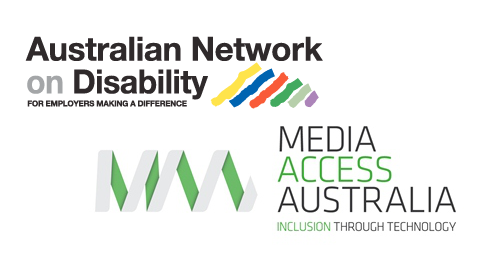
This alliance will assist AND to continue to advance the inclusion of people with disability in all aspects of business, and to enable its members and clients to better welcome people with disability as employees, customers and suppliers.
The suite of services offered by Media Access Australia targets a specific barrier to hiring people with disability and to engaging people with disability: digital accessibility.
Digital accessibility is the ability for people with disability—as well as many other groups in society—to fully access websites, online documents, services, content and other information, as well as mobile devices and the apps that run on them. That is, to fully access the digital economy.
Media Access Australia CEO Alex Varley said of the alliance:
“This alliance is an exciting step because it significantly broadens the notion of accessibility in the workplace. So much of our workplace and work function today relies on digital interaction that digital accessibility is now fundamental to achieving workplace accessibility, it’s not just a website anymore—it’s the way we work.
“As a global leader in digital accessibility, Media Access Australia has a strong heritage of achieving incremental change through a practical approach of getting involved and helping make it happen. This alliance is testament to that approach. Achieving accessibility is an incremental process and together we can help spearhead change.”
Australian Network on Disability CEO Suzanne Colbert said of the alliance:
“At AND our expertise lies in providing practical assistance to advance the inclusion of people with disability in all aspects of our members’ business. This alliance with Media Access Australia - experts in the digital accessibility space - will provide a solid link to advice, resources and training.
“AND’s in-depth knowledge around inclusion of people with disability, combined with the knowledge and expertise of Media Access Australia’s team around digital accessibility, will provide AND members with a comprehensive knowledge base to help advance inclusion within their own organisations.”
The first step for most organisations in achieving greater accessibility is to review and assess their current digital platforms, to identify both barriers to access and quick accessibility wins.
In light of this, Media Access Australia will be working with AND to introduce its Digital Accessibility Maturity Assessment (DAMA) service to AND members. The DAMA service provides a valuable roadmap to help guide organisations and prioritise what’s required to achieve digital accessibility.
Media Access Australia services will now be available as part of AND member offerings.
Media Access Australia and AND will follow on from this DAMA service with further tailored training on specific accessibility issues and knowledge transfer sessions on digital accessibility best-practice.
Media Access Australia
Inclusion through technology
We believe that all Australians have the right to access all forms of media and information, through technology, so they can participate fully in society.
Media Access Australia is Australia’s only independent not-for-profit organisation devoted to increasing access to media for people with disabilities.
At the core of our work is the understanding that exclusion from mainstream audiovisual media has profound effects on educational outcomes, workforce participation and social inclusion.
Access to media through technology empowers people to be independent, gain knowledge, make their own choices, and be active members of our society.
Our expertise
We promote inclusion by providing expert knowledge and advice on existing and emerging mainstream technologies to government, industry, educators, consumer organisations and individuals.
We demonstrate how media accessibility can be improved in practical ways, by piloting innovative ideas and major projects.
We work as a catalyst for change in areas of access that include television, DVD, cinema, the arts, education, computing and the Internet, with a primary focus on people who are blind or vision impaired, or Deaf or hearing impaired.
We seek to improve national and international Internet accessibility standards as a member of the World Wide Web Consortium (W3C), an international online community where the general public and organisations work together to develop web standards.
We are a national organisation, based in Sydney, with a satellite office in Perth.
Our heritage
Media Access Australia was formed out of the Australian Caption Centre, a not-for-profit organisation co-founded by Adam Salzer and Alexandra Hynes in 1982.
The Centre aimed to promote and produce captioning for Deaf or hearing impaired Australians. At the Centre’s inception, captions were non-existent, however, over its life the organisation grew to provide captioning services on TV, video and DVD.
In 2005, the Centre sold its commercial operations including captioning services to Red Bee Media, and became Media Access Australia. We no longer provide services to business, allowing us to focus on promoting inclusion without the conflicts of commercial operations.
As Media Access Australia, our focus broadened to include people who are blind or vision impaired and others who are disadvantaged in access to media.
We recognised that, while some needs are different between disabilities, there are important similarities in terms of solutions, technologies, industries and regulation. By focusing on these similarities we can achieve better results for all.
Top of page

